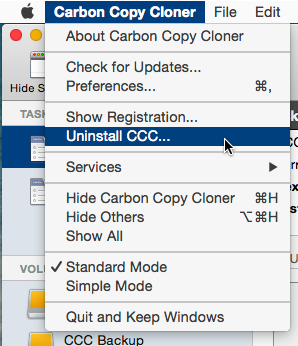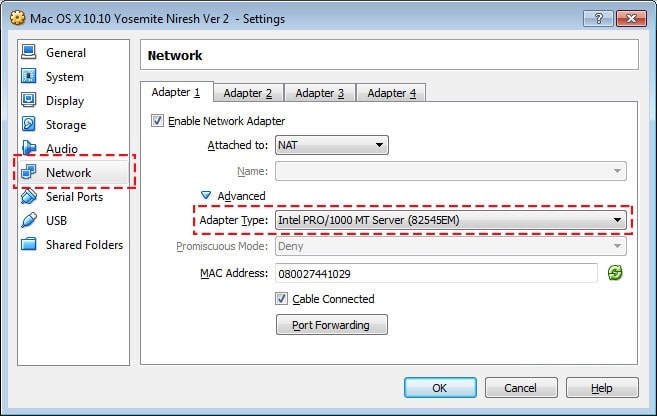- Carbon Copy Cloner Mac Os X Snow Leopard
- Carbon Copy Cloner Reviews
- Carbon Copy Cloner Snow Leopard Free
- Your problem sounds hardware related. Safari and Spotlight should not cause those symptoms. First thing to do is backup your hard drive. Make sure you have a recoverable backup made with Time Machine or a bootable clone done with SuperDuper or Carbon Copy Cloner. Next run the Apple Hardware Test on your machine. See the following LINK.
- Is there a way to clone a hard drive using disk utility as opposed to carbon copy cloner? I have my original HD and want to add a second drive ( preferably an SSD ). The problem is that the current HD is partitioned and running snow leopard on one partition and El Capitan on the other.
- Mac OS 10.6 Snow Leopard Mac OS 10.7 Lion Mac OS 10.8 Mountain Lion Mac OS 10.9 Mavericks An older version of CCC is still available for users running Tiger and Leopard. Carbon Copy Cloner includes a software update feature that periodically checks bombich.com for updates to CCC.
- Launch Carbon Copy Cloner. In the window that appears choose the old Mac’s startup volume (Macintosh HD, for example) from the Source pop-up menu. From the Destination pop-up menu choose the new.

Expert news, reviews and videos of the latest digital cameras, lenses, accessories, and phones. Get answers to your questions in our photography forums.
When you need to get data off an old Mac onto a new one, OS X’s Migration Assistant is often all you need. But it doesn’t let you restore specific files and you can’t restore an identical backup of another Mac’s hard drive. In such cases you need some other options. Here I’ll show you how (and when) to move your data using cloning, Time Machine, and other third-party backup applications.
When to clone an old drive
If you’ve set up a Mac exactly as you like it and later want to restore it to this state, cloning your Mac’s hard drive is the way to go. It can be done with a variety of tools (some of which are free) and allows you to create a bootable copy of your Mac’s hard drive. Note that your new Mac must be compatible with the version of the Mac OS that’s on your old Mac. For instance, if you’ve purchased a new Mac that can only run under OS X 10.7 (Lion), cloning a volume that boots up under OS X 10.6 (Snow Leopard) isn’t an option. Similarly, your old PowerPC Mac won’t be able to boot from a clone of a volume that boots from Snow Leopard or Lion, as these versions of the Mac OS require a Mac with an Intel processor.
Disk Utility Although you can clone a drive with Apple’s Disk Utility (in /Applications/Utilities), Disk Utility doesn’t allow you to clone the volume that you’ve booted your Mac from. If you want to use Disk Utility you must instead boot from a volume other than the one you want to clone and then use Disk Utility’s Restore feature.
To do this connect your two Macs with a FireWire cable and boot your new Mac while holding down the T key so that your computer starts up in Target Disk Mode (you’ll see a FireWire symbol on the new Mac’s display). Your new Mac’s hard drive will appear as a FireWire drive on your old Mac’s desktop.
Within Disk Utility select the startup volume on your old Mac from the list of volumes on the left side of the Disk Utility window. Click on the Restore tab and drag that volume to the Source field within the main portion of the Disk Utility window. Now locate the startup volume on the new Mac (it will bear the orange icon of a FireWire drive) and drag it to the Destination field. Click the Restore button, enter your Administrator’s password, and click OK. Disk Utility will erase your new Mac’s hard drive and copy the contents of your old Mac’s startup volume to it.

When the job is finished, shut down the new Mac by pressing on its power button, disconnect the FireWire cable, and restart your new Mac. It should now boot up and be configured exactly like your old Mac—complete with all its documents and applications.
Carbon Copy Cloner Another method is to download a copy of Bombich Software’s Carbon Copy Cloner (; payment requested). This tool allows you to clone the volume you’ve booted from and, in the process, create a bootable copy on another Mac.
Once again, connect the two Macs with a FireWire cable and boot the new Mac into Target Disk Mode by holding down the T key at startup. Launch Disk Utility, select your new Mac’s hard drive, click the Erase tab, make sure Mac OS Extended (Journaled) is selected in the Format pop-up menu, and click the Erase button. In the sheet that appears, click Erase again to confirm your decision. In short order, your new Mac’s hard drive will be erased.
Launch Carbon Copy Cloner. In the window that appears choose the old Mac’s startup volume (Macintosh HD, for example) from the Source pop-up menu. From the Destination pop-up menu choose the new Mac’s hard drive. The I Want To area below should read Maintain a Backup (Archive Modified & Deleted Files). Click the Clone button and an exact copy of your old Mac’s startup drive will be copied to your new Mac. Grammarian pro. This copy will be bootable. Shut down the new Mac by pressing its power button, disconnect the FireWire cable, and restart the new Mac. It will boot with all the contents of the old Mac.
Carbon Copy Cloner Mac Os X Snow Leopard
When to restore data from a backup
Assuming you’ve been backing up your Mac regularly, you have another way to move your data over to a new Mac. You can restore a portion of your data from a backup, even if that data was backed up from a different Mac (say, the old one you’re retiring). This is handy when you want just specific files rather than a copy of the entire drive.
Time Machine To do this with a Time Machine backup, connect the disk that contains the backed up data, click and hold on the Time Machine icon in the Dock, and choose Browse Other Time Machine Disks. (Alternatively you can Option-click on the Time Machine menu in the Finder’s menu bar and choose this same command.) In the window that appears, select the volume or drive that contains your backup archive and click Use Selected Disk. The Time Machine interface will appear. Use it to locate the data you’d like top restore to your current Mac.
Third-party backup programs Other backup programs offer similar capabilities—without the Time Machine interface, naturally. Install a copy of your backup program on your new Mac and use it to browse and restore your data from the backup archive you created with this tool on your old Mac. Note that in the case of both Time Machine and third-party backup applications, you may run into permission issues when restoring data from a user account other than your own—your Mac may tell you that you don’t have the proper privileges to open some files. You can get around some of these problems using Lagente Software’s free BatChmod, which allows you to easily change file permissions.
With these techniques as well as a hand from Apple’s Migration Assistant, you should be able to move just about any data you’d like from an old Mac or backup archive to your new Mac.
Carbon Copy Cloner Reviews

Carbon Copy Cloner Snow Leopard Free
Hey folks,
I've tried this about 4 times now. Making sure to create a partition with a GUID Partition Table. Directly from the disk and from a disk image, etc. Every time I try to install from the USB drive, when the installation reboots I end up back on my other boot volume and a Boot EFI or something like that icon appears on the USB drive.
Am I doing something incorrect despite following rather explicit instructions or is there any possibility that the drive I'm using simply isn't compatible?
Thanks for any replies.
PS. I've tried selecting the USB drive to boot from and it either doesn't show up, or my machine boots to my other boot volume regardless.
